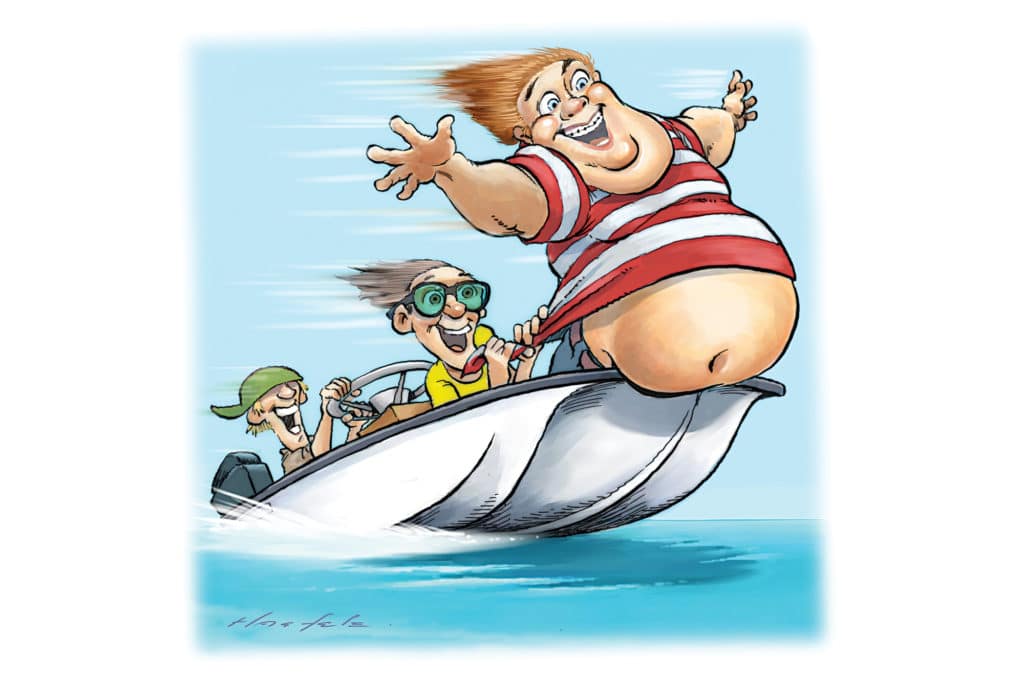
Four guys with Medicare cards and sciatica—a boat designer, boatbuilder, boat captain and boat broker—are sitting in a bar. They’re jawboning about a boat. Not one they designed, built, ran or sold, but the one that made all their careers possible.
It’s the origin story of the modern marine industry.
The boat was penned by Ray Hunt and inspired by the Sea Sled, an alien form noodled in the 1930s by a Harvard graduate named Albert Hickman. The craft’s inverted-V bow and pancake-style after sections were more than its wood build could tolerate, and it beat itself into extinction. Another Harvard graduate named Dick Fisher and a pal named Bob Pierce birthed Hunt’s improved effort in an autoclave. The result was an unsinkable, virtually indestructible 13-foot fiberglass, foam-filled Twinkie.
Boston Whaler was born in 1958. For families with boating in their blood, the 13 was soon adopted as a babysitter for overactive adolescents. With just a trifle of horsepower, the 13 could plane slowly with one big kid or two small kids as crew. I believe that Hunt, who also invented the deep-V hull form, created the 13 as a challenge for kids to think about the nature of boats.
Graduating from bathwater boat design, we took the bathtublike Whaler 13s to sea. Advertising that showed Fisher sawing the buoyant boat into pieces and then motoring away numbed our parents to its potential for abuse. Through trial and error, we learned how fiddling with displacement, aerodynamics and center of gravity could help performance.
Sitting on the cockpit sole instead of the mahogany seating reduced wind resistance. Shifting the center of gravity forward, closer to the center of dynamic lift, reduced the bottom’s angle of attack, which helped with planing. Through “testing,” we discovered the thrill of dynamic instability, stuffing and swamping. Aboard a 13, these lessons were less dangerous than fun.
The positions of the fuel tank and crew were critical, and we learned why the bow had been the crew’s domain since the days of sailing ships. At idle, the 13 offered tolerable transport for six adults. At speed, we discovered the relationship of weight, inertia and comfort, and positioned our volunteer ballast forward, yielding a tolerable angle of attack as their “transoms” dampened impacts.
The pull-start 18 hp Evinrude outboard made for good exercise and was a wise choice for a lightly loaded 13. With crew aboard, we could achieve planing speed by hopping to the beat of the wheezing motor as it attempted to climb its Everest-type torque curve. The heavier 33 hp electric-start Johnson was the solution, but bailing buckets and submerged batteries taught us the compromise of adding weight where it isn’t needed.
All boats are compromises, and perhaps the 13 was more so than most, but to the four guys with Medicare cards and sciatica, it was much more. Thanks for the careers and the memories.









